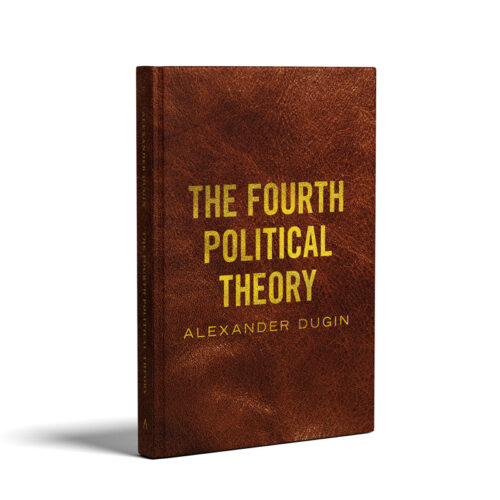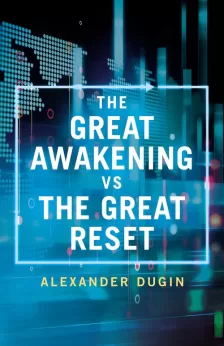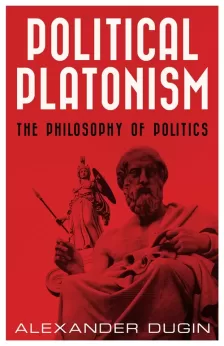This essay deals with the semiotics of Americanism, given that the language in America has acquired a different meaning from that used elsewhere in the world. The American meta-language, as employed in the political arena, is reminiscent of the communist language in the ex-Soviet Union, although American politicians tend to use words and phrases that appear less abrasive and less value-loaded than those used by European politicians. In the American academe, media, and public places, a level of communication has been attained which evades confrontational discourse and which resorts to discursive vocables devoid of substantive meaning. Americans, in general, avoid the political hyperboles and qualifiers that the state-run media and party nomenklatura in the ex-Soviet Union once used in fostering the veracity of communist ideology. Also, unlike Western Europeans, and very much in line with their ideology of historical optimism and progress, Americans are enamored with the overkill of morally uplifting adjectives and adverbs. Their choice of grammatical embellishers is consistent with the all-prevailing market, which, as a rule, must employ for the commerce of its goods and services adjectives in their superlative forms. By contrast, behind the communist semiotics in Eastern Europe, there always loomed a general doubt. Communism was a make-believe system in which, ironically, citizens never believed and which everybody, including communist party dignitaries, made fun of in private. Eventually, verbal mendacity spelled the death of Soviet Communism.
In America, by contrast, politicians and scholars, not to speak of the masses, passionately believe in every written word of democratic discourse. American official communication perfectly matches the rule of law and will, therefore, rarely trigger a violent or a negative reaction among the citizens. Surely, Americans like staging protests and marches; they are masters of organizing rallies against some unpopular governmental decision; they can easily drum up public support on behalf of or against some issue — be it on behalf of environmental protection or “workplace rights,” against American military involvement in a foreign country, or against the fraudulent behavior of some local political representative. But, as an unwritten rule, seldom does one see rallies in America that challenge the democratic substance of Americanism or the ceremonial language of the American ruling class.
In his classic Metascience and Politics, the American scholar James Gregor provides a solid theoretical account of postmodern language and politics. However, his analysis of political meta-language appears to be too hermetic and it rarely provides any much needed example regarding political use and abuse of the language by American elites. Being also recognized as the foremost expert on intellectual fascism in Europe, Gregor certainly knows what he is writing about. One must give him credit for dissecting political semiotics — as long as the totalitarian systems of communism and fascism are his subject — yet he hesitates in wielding the same scalpel against political utterances by American elites and their court historians. Are not “normative locutions,” as he calls political propaganda in fascism and communism, also part and parcel of the American ceremonial language, banking on the lowest impulses of the American masses in order to sell them the “best of all worlds”? Gregor, unfortunately, does not use the explicit word for American “doublespeak,” preferring instead an arcane label, “the non-cognitive language which is used for manipulative or predictive analyses.” Despite valuable insights, Gregor fails to provide examples of propagandistic American rhetoric, although he notes that “social sciences have produced ample evidence that most people do not have clearly articulated values, much less any one specific subtending values.”
To put it crudely, postmodern Americans and the Americanized masses in Europe are better fooled and deceived by official propaganda than were the Sovietized and communized masses in Eastern Europe. Due to the torrent of meaningless vocables and idioms, such as “human rights” and “democracy,” the thought control and intellectual repression in postmodern America functions far better. Therefore, in the American “soft” system, any motive for a would-be heretic to overthrow the system is virtually absent. The American system is posited as a historical finitude, simply because there are no competitors for another “freedom narrative” in the present world. Thus, America gives an impression of being simultaneously the freest country and the best of political systems, as compared to any past or present system.
It is worth observing that millions of former communist sympathizers and opinion makers in the USA and in the European Union, after the Cold War, deemed it necessary to refurbish their former Marxist phraseology by substituting it with “soft” liberal locutions. Owing to its awesome technical know-how, America became the first country on Earth that managed to transpose its conception of political reality to a projected hyperreality. It managed to force upon the public eye the imagery which precedes a real political event. This is best observed on the American TV screen and in motion pictures, which endlessly rehash countless contingency plans on one single theme or one single topic. This surreal imagery has significantly aided the postmodern American intelligentsia in its search of new “paradigms” — an endeavor which fully squares with their definition of polymorphous postmodernity. It would therefore be wrong to interpret the sudden conversion to liberalism by the left-leaning American intelligentsia as a sign of intellectual treason. After all, fickleness has always been a standard feature of Western intellectuals, at all times in history. Given that communism and Americanism share the same techno-morphic roots, which stem from the Enlightenment and its idea of progress, as well as the common parable of a new post-historical and a-historical man, both systems are compelled to inflate or deflate their respective languages. Hence the reason why former Marxists and communist intellectuals, turned liberal and pro-American after the Cold War, can easily shrug off with impunity their former “hardcore” rhetoric revolving around Marx. In postmodernity, they have no troubles embracing the more advanced form of “soft” rhetoric; this, too, “made in the USA.”
Americanism and its accompanying dogma of liberalism came to be viewed, after the breakdown of communism, as a safe exit which enabled many leftist thinkers and authors to save face, while at the same time helping them continue with the same sloganeering about egalitarianism and global humanity, albeit in a more respectable and non-violent Americanized fashion. External rituals had to be changed too. At some recent point in history, European and American left-leaning intellectuals made pilgrimages to Havana and to Moscow. After the Cold War, with the beginning of postmodernity, it became mandatory, at the risk of otherwise ruining one’s career, to travel to the newly found super-egos: Tel Aviv and New York.
However much Communism may be dead as a programmatic religion, its verbal substratum in Americanism is very much alive, not just among left-leaning intellectuals but even among those Americans professing conservative beliefs. One must dismiss the communist signifiers and look deeply instead into the signified. In the USA, there are surprisingly many academics who seriously believe in the veracity of egalitarian and pan-racial ideas, although they package these ideas in humanitarian or Christian ecumenical words. Red star and hammer and sickle are dated referents in America; what is crucial is the usage of new symbols conveying the same meaning, but in a disarming and more sentimental way. In order to enforce its paleo-communist goals, Americanism arises in a different social setting than that which the Bolsheviks found in Russia at the beginning of the 20th century. Therefore, words and sentence structures conveying communistic messages in America must likewise be framed by different signifiers.
Modern public discourse in the USA is also teeming with Soviet-style messages, such as “ethnic sensitivity training,” “political correctness,” “affirmative action,” and “Holocaust studies.” This is best observed in American higher education, which, over the last thirty years, has transformed into so many palaces for the higher commissariats of political correctness, who form up “committees on preventing racial prejudice” and “ethnic diversity training programs”; and in these “places of higher learning” racial awareness courses have become mandatory for the faculty, staff, and students. No longer are professors required to demonstrate skills in their subjects; instead, they must parade about with sentimental and self-deprecatory statements ready on their lips, which, as a rule, denigrate European cultural heritage. What most strikes the eye is that these new verbal constructs and neologisms resemble retarded and well-masked carbon copies of the old communist meta-language dating back to the 50s and 60s, and which was once parroted obligatorily in different dialects by communized subjects all over Eastern Europe and Russia. These refurbished ritual utterances are now being mouthed by Homo americanus.
In trying to be original with their diversity, American government-sponsored multicultural groups and agencies tend to end up becoming all the same. As much as these different groups, ranging from lesbian clubs and gay societies to fellowships of cat lovers or sun worshippers, like to stress their individuality, the imagery and rhetoric they use is always echoingly familiar — and therefore redundant. Jean Baudrillard writes that “it is in its resemblance, not only analogical but technological, that the image becomes most immoral and most perverse.” By constantly stressing the same referent of “diversity,” diverse American groups and infra-political tribes prove their sameness, easily boring or tiring dispassionate observers.
Nowhere is this sign of American hyperreality more visible than in the constant verbal and visual featuring of Jewish Holocaust symbolism, which, ironically, is creating the same saturation process among the audience as was once the case with former communist symbolism. Soviet communist truth, which also consisted of endless antifascist body-counting, eventually triggered the opposite result to that which the Soviet politicians had initially expected. Homo sovieticus did not believe in communist victimology, even when that victimology contained credible elements. The best proof of communist mendacity was therefore, ironically, laid bare not by the proverbial counterrevolutionaries or the world bourgeoisie, but by former communist apparatchiks themselves. It is therefore doubly unsurprising that after the breakup of the Soviet Union these same apparatchiks showed no qualms in rapidly converting to Americanism and anticommunism. One may conclude that if they so skillfully betrayed their self-evident beliefs once, very likely they will, with the same rapidity, discard their newly adopted American ideology — when the time grows ripe for new “self-evident truths.”
In a similar fashion, the American visual description of the hyperreality of Auschwitz will not contribute to a better understanding of the Jewish question; it will only cause more anti-Semitism. “It is the perpetuation of it in a different guise, under the auspices, not of a site of annihilation, but of a medium of dissuasion,” writes Baudrillard. The larger postmodern narrative regarding the Holocaust thus runs the risk of no longer representing a historical event, but of transforming into a massive media non-event.
* * *
Both Homo sovieticus and Homo americanus were and still are the products of rationalism, Enlightenment, egalitarianism, and the belief in progress. They both believe that a glorious future is unfolding on the horizon. Both herald the slogan that all men are created equal. The early Bolsheviks were as much inspired by the French revolutionaries as were the founding fathers of America. Now, in hindsight, the famed Declaration of Independence, signed by Jefferson and stating that all men are “created equal,” may sound to conservatives or racialists in the United States, not to mention in Europe, as semantic nonsense devoid of any empirical basis. Yet, attempts to rectify the damage are late in the coming. All academic discussions about genetic or racial differences are quickly neutralized by well-prepared and all-encompassing words, such as “racism” or “hate speech.” In a postmodern multiracial society, such as that of America, this was both foreseeable and inevitable. It appears that a multiracial society, such as America’s, will soon become the least tolerant society, precisely because every constituent racial or ethnic group wishes to underline its own version of historical truth. For fear of being called confrontational or racist, an honest politician or an academic must practice unstinting self-censorship.
Left-leaning critics, who argue that the methods for measuring IQ are Western-biased and that they only reflect Western standards of measurement, are, from the methodological point of view, strictly correct. But by the same token, it is equally correct to state that social and anti-racist discourse in postmodernity, including the egalitarian analyses now in vogue and the methods of critical inquiry into the origins of European slavery and racism, are also Western and American made. In fact, even those non-white academics and politicians in America who resent every vestige of traditional Western discourse are forced to admit that their own conceptualization and their own hatred against the white world has been handed down to them by the sons and daughters of their former white masters. America created slavery and racial theories of inequality; it also created self-hatred and numerous theories of racial equality.
If something is “self-evident,” it does not need to be repeated ad infinitum; it need be stated only once. Communist systems were replete with “self-evident truths,” and questioning these could land a dissident in jail. If an ideology or a political belief is founded on frail evidence, its enforcers and disciples are obliged to resort to its constant repetition. The censorial intellectual climate in the American media, so similar to old Soviet propaganda, bears witness that American elites, at the beginning of the third millennium, are worried about the future identity of the country they rule. Surely, the American system doesn’t yet require truncheons or police force in order to impose its truth. By employing to full effect the syndrome of “guilt by association,” it can remove all rebellious individuals from important places of decision — be it in academia, the political arena, or the media. This also offers a certain flexibility on the part of the high priests of this new inquisition, who are able to change the language of judgment to fit new contingencies or fashions.
It would be a waste of time to speculate what was crossing Jefferson’s mind at the time of the signing of the Declaration. Jefferson and his compatriots were people of the Enlightenment, wholly devoted to Rationalism. Jefferson was a man of his epoch and his intellectual legacy can only be understood within the spirit of his time. American conservatives use him as a logo; liberals and leftists admire him; and even the pro-fascist poet Ezra Pound raved about Jefferson’s “proto-fascist” legacy. Jefferson is considered a hero in America, although at some point in the future, he may be dismissed as a crook or a con man. The timeless quest for historical meaning will always depend on those who define that meaning as well as the truth seeker himself.
George Fitzhugh, a Southern racialist and an antebellum author, intensely hated Jefferson. Yet, he viewed himself as a good American — only not in a Jeffersonian fashion. Being a keen observer of political semiotics, he knew well how words could historically be deployed — sometimes with positive and sometimes with negative results:
The true greatness of Mr. Jefferson was his fitness for revolution. He was the genius of innovation, the architect of ruin, the inaugurator of anarchy. His mission was to pull down, not to build up. He thought everything false as well in the physical as in the moral world. He fed his horses on potatoes, and defended harbors with gunboats, because it was contrary to human experience and human opinion. He proposed to govern boys without the authority of masters or the control of religion, supplying their places with Laissez Faire philosophy…
Similar critical views of early American ideology were later echoed by many American and European authors. Their un-American words may ring abrasively in the ears of a 21st-century liberal purveyor of the American dream. One must admit, however, that Jefferson certainly did not consider native Indians or Africans to be his equals. But equally true is it that the spirit of Enlightenment gradually seeped over into the egalitarian dynamic of early Americanism and gave birth, two hundred years later, to Homo sovieticus and Homo americanus. The philosophical tenets of the Declaration led everybody to wish to be his own boss and not to be bossed around by any king or prince. The result of this passionate drive for equality must lead, eventually, to mutual suspicion and latent civil strife, as was observed in the ex-Soviet Union. Needless to say, irrespective of their official braggadocio regarding their lauded multicultural and democratic credentials or the egalitarian dream which they like to sport, in private, the vast majority of white European American politicians and academics hardly believe in the equality of peoples and races. But it is their haunting fear of falling into disrepute which functions as a self-projected scarecrow, preventing them from uttering these “self-evident” words aloud in public.
For is it not “self-evident” that men are different? But does it matter at all? What Jefferson and his like had in mind is of little importance; what is important is what his successors and non-European American interpreters had in mind two centuries later. Jefferson’s words could at any time and place be easily taken out of context and used as a justification for copying paleo-communistic practices.
In all fairness, one must give credit to those rare American rebels mentioned earlier who fell out with the syndrome of Homo americanus, yet who refused to embrace its communist replica. Who says that the enemy of my enemy must be my friend? Often my enemy’s enemy can be an even worse foe. If one were to calculate the ratio between true American rebels and true European rebels, then one would need to question the often stated European cliché about the alleged American conformism vs. the alleged European non-conformism. The role of intellectual elites in Europe during the Cold War period, and especially after the end of communism, was deplorable. Aside from a few individuals, European intellectuals and politicians have been masters of self-censorship and self-delusion, as well as great impresarios of ideological mimicry. As a rule, they discard their ideas as soon as these ideas fall out of fashion.
From the European perspective, one can welcome the fact that Europe has, by and large, been an area of cultural endeavors and great history. Yet Europeans have also deftly proven to be experts in tribal warfare and mutually destructive mayhem — which consequently gives the lie to their attempt at objectively describing Homo americanus. Europeans have lamented for centuries about the alleged Turkish, Arab or Judaic danger, often forgetting that they generally set to carving each other to pieces whenever alien races and nations are no longer on their turf. There is, therefore, little reason to search for points of divergence between America and Americanized Europe, on the one hand, and between Homo americanus and Homo sovieticus, on the other. At the beginning of the third millennium, “Americanolatry” and democratic mimicry became a part of the common landscape in America, Europe and the ex-communist Eastern Europe. Each side is trying to outwit the other with a surplus of Americanized verbiage, such as “tolerance,” “democracy,” and “human rights.” “In the Americanized world of the present and the immediate future those forces are set against culture,” noted Aldous Huxley, quite some time ago. “… The born culture haters are much more numerous than the born culture lovers.” One can detect in this quotation by Huxley a sound understanding of Americanism, the results of which are reminiscent of those brought by communism, whose mechanism Huxley also well understood.
Huxley knew whereof he wrote when he observed the mimicry of Americans he met. He had detected similar mimicry amidst citizens in communism. His understanding of the egalitarian communist pathogenesis remains unsurpassed by his contemporaries, including the much quoted George Orwell. Homo americanus, Homo occidentalis, or Homo sovieticus are still thriving in postmodern Europe and America and their days are not numbered yet. These species harbor herd-like instincts, which are malleable and ready for all egalitarian experiments. Huxley noted that all the deeds of extraordinary men in the Americanized future — given that their acts do not fall into the egalitarian social scheme — “will be regarded as a crime.” He wrote, “In this reversal of the old values, I see a real danger, a menace to all desirable progress.”
Granted, the ex-Soviet Union was a criminal enterprise. Why not suggest that Americanism may also have some criminal traits? Would it not be desirable in postmodernity, as Molnar suggests, to set up the studies of “Americanology,” and to critically examine the “American man,” and alongside him the entire American ideology? “We must look forward to a time where there will be ‘Americanologists’ in the same capacity as there were ‘Sovietologists.’” For those thinkers and advocates of the study of Americanolatry — or at least for those individuals who think critically — using the same analyses in studying the egalitarian obsessions in the United States which were once applied in the Soviet Union is a matter of civic honesty and intellectual integrity. By probing critically into Americanism and Homo americanus, one could probably set the stage for a better understanding of postmodernity and also gain a better grasp of the Americanized system in any corner of the world.
It must be recalled that the passionate American desire to “make the world safe for democracy” also led, after World War II, to the creation of the Nuremberg Tribunal, whose legal structures make up the judicial framework of the postmodern European Union, including the European Criminal Code. Fortunately, this has not gone unobserved. Certain eloquent European and American authors and historical revisionists, who examined the American system during and after the Second World War, certainly do not fall into the category of Homo americanus. They opened up, long ago, a Pandora’s box that may lead to new paths in the search for new social models and a new historical meaning.










“America became the first country on Earth that managed to transpose its conception of political reality to a projected hyperreality. It managed to force upon the public eye the imagery which precedes a real political event.”
Exactly this. I love Baudrillard. I also can’t stand Jefferson. He was a total idealistic pig. The epitome of the trader in leadership.
Great post!